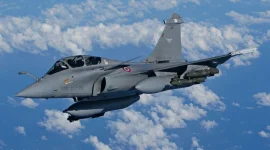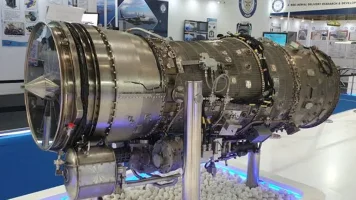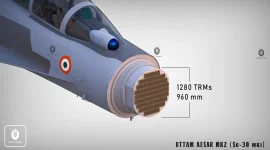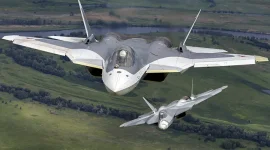- Views: 2K
- Replies: 4
The integration of a new, advanced radar system on India's indigenous Tejas Mk1A fighter jet has mandated a comprehensive re-certification process for its primary long-range weapon, the Astra Mk-1 missile.
Although the missile has previously been cleared for use on earlier Tejas variants, the significant technological leap to an Active Electronically Scanned Array (AESA) radar requires a fresh cycle of rigorous testing to ensure safety, reliability, and optimal combat performance.
The core of this upgrade is the replacement of the older, mechanically scanned radar with the new Israeli EL/M-2052 AESA radar.
A mechanically scanned radar relies on a single dish that physically moves to direct its beam. In contrast, the AESA radar contains numerous small, static modules that steer the radar beam electronically.
This modern technology allows the Tejas Mk1A to scan faster, track multiple targets simultaneously, and better resist electronic jamming by adversaries, fundamentally changing how the aircraft detects and engages threats.
This technological shift creates several critical challenges that necessitate the re-validation process.
The new AESA radar and the Astra missile must be perfectly synchronised to function as a single weapon system. This involves re-calibrating how the radar's unique signals and data-links communicate with the missile's guidance system.
Furthermore, the aircraft's fire-control computer, which calculates when and how to launch the missile for the highest probability of a kill, must be entirely reprogrammed to take full advantage of the new radar's superior range and tracking abilities.
Progress in this complex integration is well underway. Key hardware and software, including the Tejas Mk1A's Mission Computer and Stores Interface Unit, have already been updated to handle the new system.
A significant milestone was achieved on August 23, 2023, when a preliminary test from a Tejas Limited Series Production (LSP) aircraft confirmed that the basic electronic connection between the AESA radar and the Astra missile was successful.
However, this initial test was only the first step. The full certification requires a much more extensive testing regime to clear the weapon for operational deployment with the Indian Air Force.
The full certification includes "envelope expansion" trials, where the missile will be fired in a wide variety of combat scenarios, at different speeds, altitudes, and target angles.
Engineers must also fine-tune the system's electronic counter-countermeasures, strengthening its defence against enemy jamming. Finally, the missile's guidance logic must be fully coupled with the aircraft’s mission computer for seamless and effective operation in a real-world combat environment.
The successful integration of the Astra Mk-1, a beyond-visual-range air-to-air missile developed by India's Defence Research and Development Organisation (DRDO), with the AESA-equipped Tejas Mk1A is a crucial step in modernising India's air power.
This combination of an indigenously manufactured aircraft by Hindustan Aeronautics Limited (HAL) and a homegrown missile system represents a significant achievement for India's self-reliance initiatives.
Once complete, it will provide the Indian Air Force with a highly capable and potent fighter platform, enhancing the nation's air superiority capabilities




